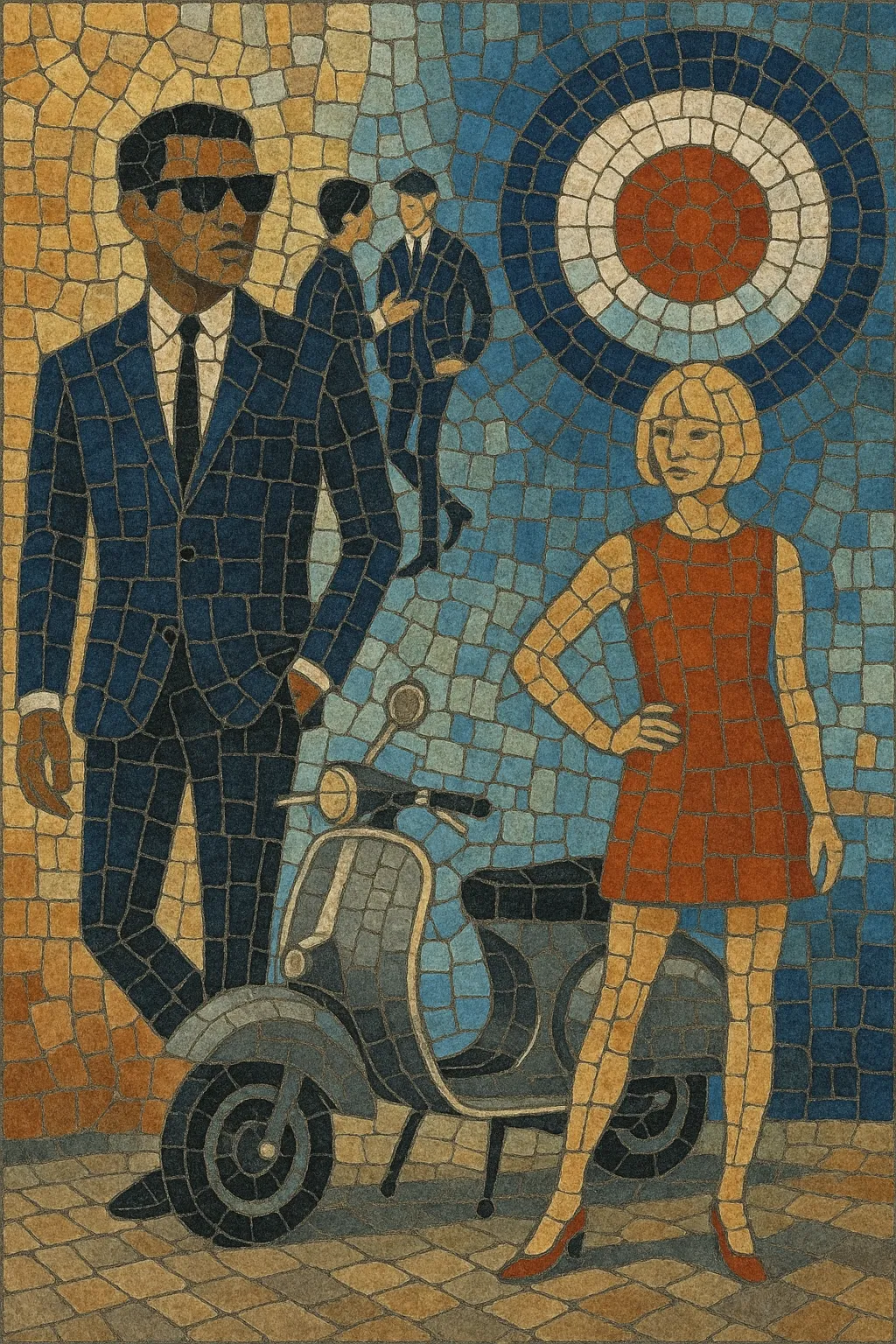Mod is a British music style rooted in the early-to-mid 1960s modernist youth culture that prized sharp fashion, nightlife, and danceable American R&B and soul. Musically, it blends tight, hook-forward songwriting with brisk tempos, crisp guitar work, prominent backbeats, and frequent use of Hammond organ and occasional horn stabs.
Typical mod records are concise and energetic, drawing on blues and R&B progressions but framed with pop sensibility and vocal harmonies. The sound sits between beat music and early rock, with a soulful edge and a strong emphasis on dancing and style. While the original wave crested in the mid-1960s, the approach later reappeared in the late-1970s mod revival and has continued to inform power pop and Britpop aesthetics.
The term “mod” derives from “modernist,” a London-based youth scene initially enamored with modern jazz and stylish, cosmopolitan nightlife. By the early 1960s, club culture pivoted toward American rhythm and blues and soul, as DJs and bands in Soho and around the Marquee and Flamingo clubs fueled a demand for fast, danceable sets. Beat music, rock and roll, and British rhythm & blues converged into a distinctive, style-conscious pop sound.
Mod crystallized as a chart and street phenomenon. Bands like The Who, Small Faces, and The Action fused R&B grit with pop hooks, tight rhythms, and short song forms suitable for clubs. Organ textures, vocal harmonies, and blues-derived progressions were common, while the scene’s affinity for Jamaican ska/bluebeat added a bouncy, dancefloor-friendly feel. Television shows and scooter rallies helped broadcast mod aesthetics nationwide.
As psychedelia and studio experimentation spread, several mod-adjacent groups incorporated thicker textures and more colorful production, blurring lines between mod, freakbeat, and early psych-pop. Some artists retained the compact R&B core; others embraced more exploratory directions.
The original wave waned as psychedelia and heavier rock dominated. However, mod’s musical DNA—concise songwriting, R&B drive, crisp guitars—remained influential. In the late 1970s and early 1980s, a mod revival (The Jam, Secret Affair, The Chords, The Lambrettas) reasserted sharp hooks and dancefloor urgency, intersecting culturally with the UK’s ska/2 Tone movement.
Mod informed power pop’s jangle and brevity, underpinned elements of Britpop’s guitar-forward songcraft, and shaped the presentation of numerous indie and new wave acts. Its enduring legacy blends a love of American R&B with distinctly British songwriting craft and style.


